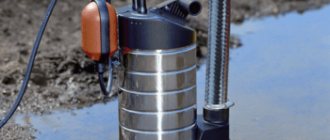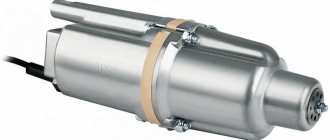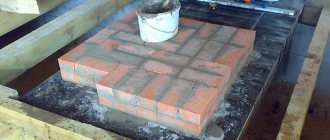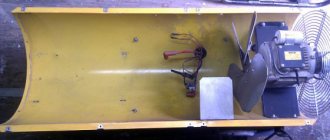| Place | Name | Characteristics in the rating |
| The best test detectors for hidden wiring |
| 1 | Mastech MS8902B | Best quality |
| 2 | Phase GK51 | The simplest device |
| 3 | STAYER Master Topelectro | Deep Scan |
| 4 | LA-1013 CEM-Instruments | Professional instrument with amplifier |
| 5 | NWS 819-4 | Widest range of detectable currents |
| The best hidden wiring detectors with positioning |
| 1 | Bosch GMS 120 Professional | The best choice |
| 2 | Mastech MS6818 | Maximum information content |
| 3 | Multi Stud Finder | A simple device without unnecessary options |
| 4 | ADA instruments Wall Scanner 80 | The best detector with tree detection capability |
| 5 | Practice Expert DU-100 M | Informative display |
A hidden wiring detector is a tool that can find wires and other elements in the wall. There are two types of detectors:
- testers, that is, reacting to the presence of a phase in the network at a distance;
- and pinpointers, that is, metal detectors that detect the presence of wires, regardless of whether there is voltage on them or not.
Detectors from the second category are, in fact, metal detectors, but with a limited range. They determine the location of metal elements and are also able to determine their type. Some tools can also detect wood. Unlike full-fledged metal detectors, detectors have a shallow search depth. Most often it is limited to five centimeters, but they are able to determine the location of the wire with an accuracy of a centimeter.
Test indicators have the same characteristics as regular indicators, the only difference being that they find the phase at depth. They cannot determine the location of the wire with accuracy, but they are much cheaper than pinpointers. Also, testers do not distinguish the type of metal, and if voltage is not applied to the wire, it will not be detected at all. When choosing a wiring detector, you should pay attention primarily to the search depth and positioning accuracy. But manufacturers often overestimate this parameter, and in order to find the truly best device at the most attractive price, you need to carefully study our rating, which includes the 10 most interesting options.
The best test detectors for hidden wiring
Tester detectors determine hidden wiring in the wall by the presence of a current phase in it. If the wire goes to ground, the indicator will not detect it, as in the case of no current. This tool is often used not to search for wires in the wall, but to determine the location of damage to the wiring. If current begins to be lost, the instrument signal will become weaker and disappear completely if there is no phase. Thanks to this device, you do not have to completely rip out the wiring from the wall to find the location of the damage.
comparison table
If you have not yet decided which hidden wiring detector to buy, the following table will make your choice easier. It lists the leading characteristics of the models reviewed and their average price.
| Model | Electrical wiring detection depth, mm | Ferrous metals, mm | Non-ferrous metals, mm | Wooden structures, mm | Average price, rub. |
| Control Drill Check | 40 | 40 | 20 | n/a | 990 |
| Mastech MS6906 | 75 | 50 | 30 | 30 | 4 006 |
| ADA instruments Wall Scanner 80 | 50 | 80 | 60 | 20 | 3 490 |
| BISON Professional DX-750 | 100 | 80 | 3 650 | ||
| ELITECH D 100 | 4 500 | ||||
| Bosch GMS 120 Professional | 120 | 38 | 6 389 | ||
| CEM LA-1012 | 2500 | n/a | n/a | n/a | 18 700 |
The best hidden wiring detectors with positioning
It is not always the case that the wiring that needs to be found in the wall is live. A test indicator is not suitable in this case, and only a positioning tool will cope with the task, which not only finds metals in the wall, but distinguishes them from each other. With such a device it is impossible to confuse a nail and a cable; moreover, they often have a wood search function, which is very convenient if you need to find a block under the trim in order to hammer any fasteners into it. Such devices are more expensive than testers, but there are also quite budget models, albeit with limited functionality.
What to look for when choosing
Before reading this rating, it should be clarified which criteria you should pay closer attention to. From a wide list of device characteristics, you should be primarily interested in the following:
- Detectable materials. Most of the models presented in the rating are capable of detecting electrical wiring, metal fittings, wooden sheathing or other frames. Some can “find” plastic (water and sewer pipes).
- Depth. In this case, everything is extremely simple - the technical characteristics of each model indicate the limiting values within which it can detect certain materials. In this case, it is recommended to purchase a device with a so-called “deep” reserve.
- Auto calibration. This implies automatic adjustment of the sensor to certain operating conditions. Detectors belonging to the budget and mid-price ranges require auto-calibration. For professional options, such actions are not performed, since their operating principle is completely different.
Multimeter
Fluke 117 Digital Multimeter
The multimeter is a multi-purpose instrument that combines a voltmeter, ammeter, and ohmmeter to measure voltage, current, and resistance, respectively. To search for hidden wires, it will have to be modified by connecting a field-effect transistor. It has three terminals - gate, source and drain. The gate serves as an antenna (which is why it is usually extended), and the multimeter leads are connected to the source and drain.
When searching for wiring, the device is switched to ohmmeter operating mode, without paying attention to polarity. The antenna is brought to the wall and research is carried out, monitoring the current readings. Any change in them will indicate the proximity of the electrical cable.
Searching for wires in the wall with a radio
Another way is to use an ordinary radio. You tune it to a frequency of one hundred kilohertz and bring it as close as possible to the wall in the place where the wire is supposed to pass. The wire must be live.
To create significant noise and interference, plug in a razor, or a high-speed grinder, drill, or vacuum cleaner.
If you guessed the location of the cable, the receiver will start to crackle. The closer to the strobe, the stronger it is.
Instead of a radio receiver, you can also use a reel-to-reel microphone; connect it to a tape recorder with speakers to reproduce sound interference.
ELITECH D 80
Our TOP continues - ELITECH D 80.
This is an inexpensive household detector that can detect the presence of wiring, wood, as well as non-ferrous and ferrous metals. The device recognizes objects quite accurately, the main thing is not to forget to calibrate before each measurement. And, about detected objects, the device notifies the user with a sound signal and corresponding indication on the case and screen.
The detector can detect ferrous metals at a depth of up to 8 cm, non-ferrous metals – up to 6 cm, electrical wiring – up to 5 cm, and wooden floors at a depth of up to 2 cm.
The device itself is quite light and compact. It is convenient to use and understanding the controls is not difficult. It runs on a Krona battery, the charge of which is enough for 6 hours of use. And to save battery power in case you forget to turn off the device, it has an auto shut-off function.
As for reviews, most owners speak positively about it, noting that this is one of the best universal detectors in its price segment. It is good at detecting metal in brick walls, live wires and wood under drywall.
- Magnetic metals: up to 80 mm.
- Non-magnetic metals: up to 60 mm.
- Electrical wire: up to 50 mm.
- Wood in plasterboard: up to 20 mm.
- Power: battery.
- Auto power off.
- Dimensions: 147 x 68 x 27 mm.
- Weight: 120 g.
How to use
Using the detector is not difficult.
On its panel there is a signaling device (usually an LED, but there may also be a telephone speaker to sound a sound signal). The antenna of the device is moved along the wall and the indicator is observed (or listened to if the signal is audible). When the device detects wiring or structural components, the indicator will flash or make a sound. All that remains is to determine the routing and direction of laying the wires.
Depending on the design, the device may have different capabilities.
Using the same usage techniques, you can use different functions:
- indication of hidden objects of various types (wiring connected to the power source, magnetic and non-magnetic metal, non-metal);
- determining the accuracy of the object indication as a percentage;
- temperature measurement;
- determining the center point of metal objects;
- search for wooden inserts.
Expert opinion
Makhinov Vladimir Konstantinovich
Electrical Communications Specialist
The amount of functionality is determined at the time of purchase of the device. Please note that additional options significantly increase the cost of the device. Therefore, you need to know exactly what features will be used in order to pay only for the functions you need.
Cassette player
Solder a flexible cable to the player head (you can take it from a USB cable). Turn off the motor in the player (less noise, and batteries are saved). Connect the load to the wiring. Press the Play button and move the head of the player to look for the place where the greatest hum is generated. True, the sensitivity of this device is quite low. When removing wires from 1 cm and further, especially under plaster, the device almost does not react.
Removing wallpaper
If you are carrying out a major renovation at home, and the current state of the walls and wallpaper does not bother you too much, you can simply rip off all the excess from the wall, right down to the base (brick or concrete). Old grooves can then be visible visually, or palpable by touch, thanks to bulges or, conversely, characteristic indentations.
If the wall is not plastered at all, and there is bare concrete under the wallpaper, then the cable grooves will be 100% visible even to the naked eye.
Kraftool GMS 120
Kraftool GMS 120 is a universal detector for detecting hidden wiring, ferrous and non-ferrous metals, as well as wood in walls. And this device copes with its task perfectly, very accurately determining the location of hidden objects in the walls. Its maximum detection depth for ferrous metals reaches 12 cm, non-ferrous metals – 8 cm, wiring – 5 cm, and wood – 2 cm.
The device functionality includes an automatic calibration option and an automatic shutdown function to save battery power.
Control is extremely simple and is carried out using 3 buttons. The device will notify you of the detection of hidden objects with audio and digital indications, as well as a message on the screen.
The Kraftool GMS 120 itself is quite compact and well-built. Included with it you will receive a case for convenient storage and transportation, as well as a lanyard that is attached to the body for convenient carrying of the device on your hand.
Those who have already tested this detector in action speak positively about it, noting the high detection accuracy and low cost. So. If you need an inexpensive detector that can find wiring, metals and wood at great depths, then you should pay attention to this model.
- Magnetic metals: up to 120 mm.
- Non-magnetic metals: up to 80 mm.
- Electrical wire: up to 50 mm.
- Wood in plasterboard: up to 20 mm.
- Power: batteries.
- Auto power off.
Let's go back to the source
Many people know that according to the PUE, cables are laid only at right angles.
That is, the wiring is not placed along the shortest path, it should only run strictly horizontally or vertically, and the change in direction is made at an angle of 90 degrees.
This information is not enough to determine where the cable is laid, but in the future it will help at least roughly understand which way to look for the wires from the outlet or junction box.
Briefly about the main thing
Hidden wiring is safe and aesthetically pleasing, but in some cases you need to know where it goes. There are several ways to find out the location of electrical wiring and you need to choose the one that is exactly right.
If a major renovation is being done, then the easiest way is to find the grooves with wiring simply by visually inspecting the wall. In other cases, specialized equipment is used, in particular, a locator.
You can also look for hidden wiring with a radio, hearing aid, multimeter, metal detector and, in some cases, a classic indicator screwdriver.
There are also “mythical” ways to find hidden wiring - with a compass, a magnet, or using a smartphone application. In fact, they do not stand up to any criticism, so you should not waste your time on them.
In any case, you should not assume that this work can be easily done independently, without knowledge of the basics of electrical engineering. At best, this is a waste of time, and at worst, an incorrect result that can lead to a short circuit and fire in the house. Therefore, if you have doubts about your own abilities, it is better to turn to professionals.
Alternative methods
Visual search.
If these devices are not available, then alternative methods can be used. And the first of them is visual.
In the process of sealing grooves with cables, it is not always possible to do everything very smoothly.
Therefore, it is often possible to detect the location of the wiring along a small protrusion, but for this you need to carefully examine the room, and the wallpaper will have to be removed - the wall must be “bare”.
Radio.
An ordinary radio receiver, which does not need to be modified, can also help in the search. It is enough to set the frequency on it to 100 kHz. And then we take the receiver and go searching.
To detect, we move the antenna along the wall. The cable detection signal will be an increase in noise from the speaker.
The accuracy, of course, is not high, but it is quite possible to determine the channel with the wiring.
You can also use an old tape recorder or cassette player, but to do this you need to extend the wiring going to the magnetic head. This will be the antenna.
That is, we carefully remove the head from the player, extend the wires, and then move it along the wall.
Popular with readers: How to choose a cordless screwdriver, the pros and cons of the device.
Conclusion
Unless you are using a professional device, none of the methods listed are 100% reliable. Therefore, for greater confidence, use several techniques. Sketch a rough diagram based on the location of outlets, boxes and switches. Walk along the wall with a metal detector (at least based on a smartphone). Plug in an iron or heater and “probe” the wall with a sensitive microphone.
Based on the totality of data, you can determine with sufficient accuracy where the cables are laid in the wall.
Smartphone/tablet
For mobile phones and tablets running Android or iOS, there are special applications that turn the device into some kind of metal detector. To study, you need to launch the program and bring the device to the wall surface. Using a built-in sensor, it will find a cable... or any other metal object. It is difficult to say how accurate the data obtained will be, but still this method has a right to life.
Detectors best detect objects lying close to the surface. The deeper the cable is buried, the more difficult it is to determine its location
Bosch D-tect 150 Professional
The next hero of our TOP is Bosch D-tect 150 Professional.
This device allows you to identify objects hidden in walls and floors with an accuracy of 1 mm. At the same time, its maximum detection depth is 15 cm. At this distance, it is able to detect ferrous and non-ferrous metals. In addition, the detector can detect wooden structures, plastic pipes, electrical wiring, as well as pipes of floor and wall heating systems.
Thanks to simple controls and various operating modes, the detector can be easily adjusted to suit the task at hand. When objects are detected, a beep sounds and the screen displays the depth at which the object is located. This detector is comfortable to hold in your hands thanks to the textured handle. Its housing is protected from splashes and dust, so the device can be used outdoors and on construction sites. It is also worth noting that for ease of storage and transportation, the Bosch D-tect 150 Professional comes with a case.
Well, as for the power supply of the device, it is powered by 3 AA batteries.
In general, if you need a detector that can detect objects with high accuracy even at great depths, then this model is best suited for this purpose.
- Magnetic metals: up to 150 mm.
- Non-magnetic metals: up to 150 mm.
- Electrical wire: up to 60 mm.
- Wood in plasterboard: up to 40 mm.
- Power: batteries.
- Auto power off.
- Dimensions: 97 x 200 mm.
- Weight: 650 g.
How to choose
The choice of a suitable device is based on a comparison of your needs and the capabilities of the model. Here it is necessary to take into account the volume of work to be done, the specifics of the search, the conditions and degree of accuracy of detecting hidden elements. If you have to survey large areas and search for small elements, thin or broken wiring, you will need a fairly accurate professional tool.
The optimal one is a combined type that can not only find an object, but also determine its material and configuration in the wall.
To search for ordinary wiring (for example, to eliminate the risk of short circuits when drilling holes), an inexpensive household detector is suitable. The price of the device plays a significant role - professional and multifunctional models are much more expensive than simple household appliances. Spending a lot of money for a one-time procedure is impractical, but for ongoing work it is a necessity.











